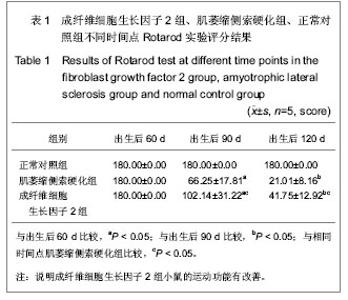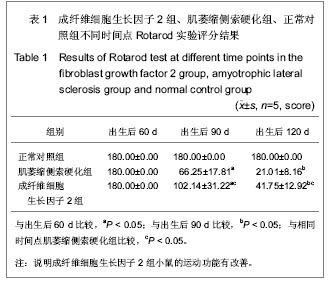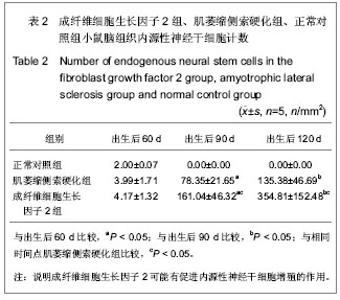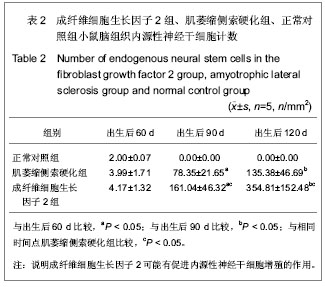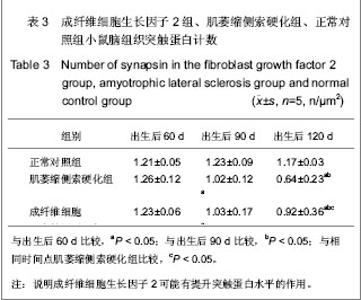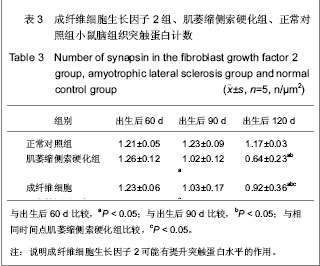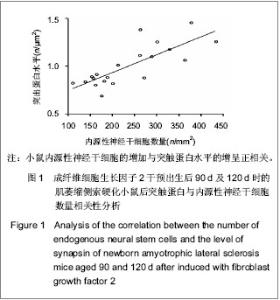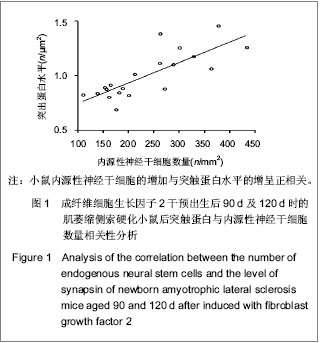| [1] Azari MF, Profyris C, Zang DW, et al. Induction of endogenous neural precursors in mouse models of spinal cord injury and disease. Eur J Neurol.2005;12(8):638-48.[2] Leker RR, Lasri V, Chernoguz D.Growth factors improve neurogenesis and outcome after focal cerebral ischemia.J Neural Transm.2009;116(11):1397-402.[3] Elvira G, García I,et al.Live imaging of mouse endogenous neural progenitors migrating in response to an induced tumor.PLoS One. 2012;7(9):e44466. [4] Wang S, Okun MS, Suslov O, et al.Neurogenic potential of progenitor cells isolated from postmortem human Parkinsonian brains. Brain Res. 2012;1464:61-72. [5] Thau-Zuchman O, Shohami E, Alexandrovich AG,et al.Combination of vascular endothelial and fibroblast growth factor 2 for induction of neurogenesis and angiogenesis after traumatic brain injury. J Mol Neurosci. 2012;47(1):166-172. [6] Tobin JE, Xie M, Le TQ, Song SK, Armstrong RC. Reduced axonopathy and enhanced remyelination after chronic demyelination in fibroblast growth factor 2 (Fgf2)-null mice: differential detection with diffusion tensor imaging.J Neuropathol Exp Neurol.2011;70(2):157-165.[7] Thau N, Jungnickel J, Knippenberg S,et al.Prolonged survival and milder impairment of motor function in the SOD1 ALS mouse model devoid of fibroblast growth factor 2.Neurobiol Dis.2012;47(2):248-257.[8] Zang DW, Lopes EC, Cheema SS.Loss of synaptophysin-positive boutons on lumbar motor neurons innervating the medial gastrocnemius muscle of the SOD1G93A G1H transgenic mouse model of ALS.Journal of Neuroscience Research.2005;79:694-699.[9] Li Y, Chen J, Chen X G, et al. Human marrow stromal cell therapy for troke in rat: Neurotrophins and functional recovery. Neurology.2002;59(4):514-523.[10] Pickles S,Vande Velde C.Misfolded SOD1 and ALS:Zeroing in on mitochondria. Amyotroph Lateral Scler. 2012;13(4):333- 340.[11] Lepore AC,Maragakis NJ.Stem cell transplantation for spinal cord neurodegeneration.Methods Mol Biol.2011;793:479-493.[12] D.W.Zang,S.S Cheema.Degeneration of corticospinal systems in the superoxide dismutase 1G93A G1Htransgenic mouse model of familial amyotrophic lateral sclerosis. Neuroscience Letters.2002;332:99-102.[13] Juan L, Dawei Z, Julie AD.Increased number and differentiation of neural precursor cell in the brainstem of superoxide dismutase1G93A G1H transgenic mouse model ofamyotrophic lateral sclerosis. Neurological Res. 2007;29: 204-209. [14] Pandya RS, Mao LL, Zhou EW,et al.Neuroprotection for amyotrophic lateral sclerosis: role of stem cells, growth factors, and gene therapy. Cent Nerv Syst Agents Med Chem. 2012;12(1):15-27.[15] Rike Zietlow,Emma L.Lane,Stephen B.Dunnett,et a1.Human stem cells for CNS repair. Cell Tissue Res,2008,331:301-322.[16] Ikemoto A, Nakamura S, Akiguchi I, et al. Differential expression between synaptic vesicle proteins and presynaptic plasma membrane proteins in the anterior horn of amyotrophic lateral sclerosis.Acta Neuropathol. 2002;103(2): 179-187. [17] Seo HG, Kim DY,et al.Early motor balance and coordination training increased synaptophosin in subcortical regions of the ischemic rat brain.J Korean Med Sci.2010;25(11):1638-1645.[18] Ma H, Yu B, Kong L,et al.transplantation of neural stem cells enhances expression of synaptic protein and promotes functional recovery in a rat model of traumatic brain injury.Mol Med Report.2011;4(5):849-856.[19] Thau N, Jungnickel J, Knippenberg S,et al.Prolonged survival and milder impairment of motor function in the SOD1 ALS mouse model devoid of fibroblast growth factor 2. Neurobiol Dis. 2012;47(2):248-257. [20] Hsuan SL,Klintworth HM, Xia Z. Basic fibroblast growth factor protects against rotenone-induced dopaminergic cell death through activation of extracellular signal-regulated kinases and phosphatidylinositol-3 kinase pathways1 Neurosci.2006; 26(17) :4481.[21] Galvez-Contreras AY,Gonzalez-Castaneda RE,et al.Role of fibroblast growth factor receptors in astrocytic stem cells.Curr Signal Transduct Ther.2012;7(1):81-86.[22] Monfils MH, Driscoll I, Vavrek R,et al.FGF-2 induced functional improvement from neonatal motor cortex injury via corticospinal projections.Exp Brain Res.2008;185:453-460. |
